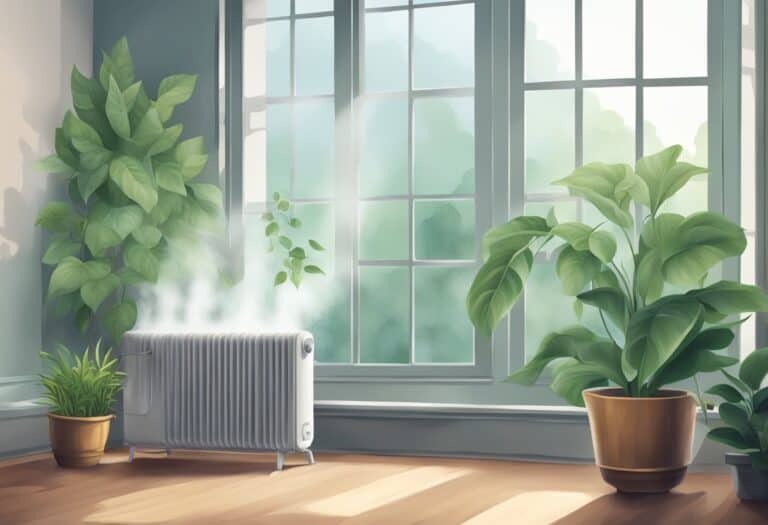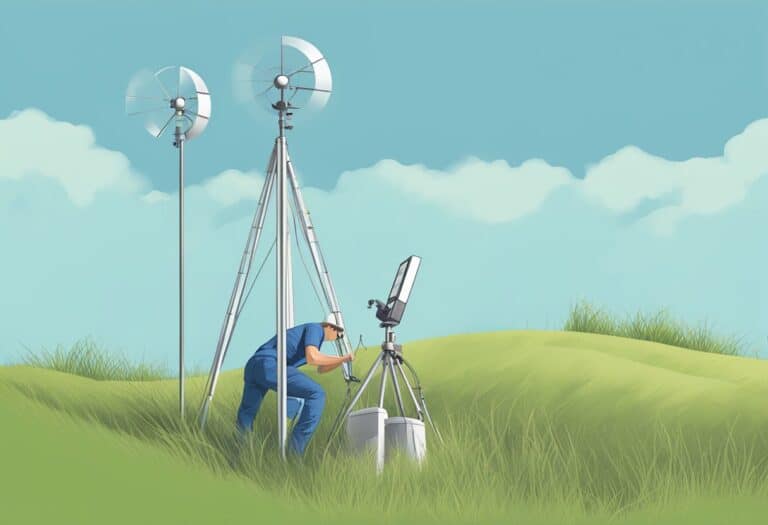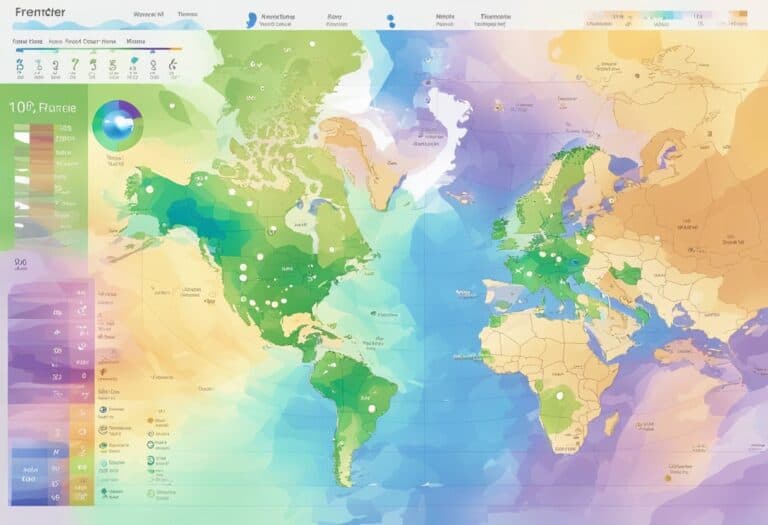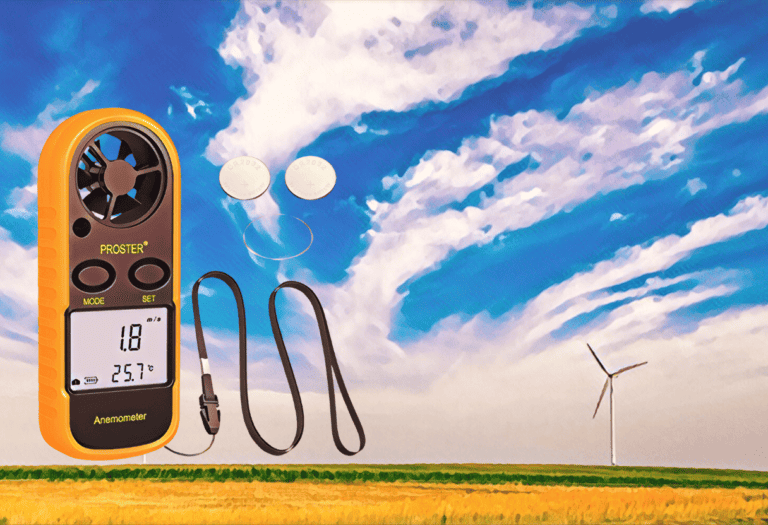Mounting a weather station correctly is vital for accurate data collection and long-term functionality.
When setting up your weather station, considering factors like location, exposure, and height can drastically affect the quality of the data gathered. Identifying a spot that offers unobstructed airflow and minimal interference from surrounding structures is crucial. Moreover, the station should be placed at a recommended height above the ground to ensure it accurately measures temperature and wind patterns.
Once an ideal location has been pinpointed, the next step involves selecting the best mounting solution that ensures stability and durability. From simple brackets to more complex mast or pole systems, a variety of mounting options are available to suit different needs and environments. Installation requires careful planning and adherence to specific guidelines.
It’s important to gather the necessary tools and materials, and follow safety precautions to prevent injury or damage to the equipment during the installation process. Regular maintenance after the setup ensures ongoing accuracy and extends the life of the weather station.
Mounting a weather station correctly is crucial for accurate weather data collection. Choose a location with clear airflow and minimal obstructions, and mount the station at the recommended height to accurately measure weather elements. Use stable mounting solutions like brackets or poles for durability. Regular maintenance ensures the station’s long-term accuracy and functionality.
Choosing the Right Location for Your Weather Station
Selecting an optimal site for your weather station is critical for obtaining accurate data. Consideration of environmental factors and the unique characteristics of different settings—urban, suburban, or rural—is essential to ensure precision.
Assessing Environmental Factors
When installing your weather station, your primary concern should be to capture unobstructed, accurate ambient weather data. Look for a place with:
- Clear exposure: Free from shading to ensure adequate sunlight reaches solar-powered sensors.
- Open space: An area clear of obstacles like buildings or trees that can cause wind eddies or block rainfall.
- Natural surroundings: The closer the locale is to the environment you are monitoring, the more representative the data.
Comparing Urban, Suburban, and Rural Siting
- Urban Areas: While these are typically the most challenging due to buildings and pollution, place your station on flat rooftops away from exhaust and reflective surfaces.
- Suburban Areas: Yards in suburban regions are safer bets. They offer more space but watch out for interference from nearby houses or foliage.
- Rural Area: These locations are usually the most ideal, offering expansive, open environments. Whether it’s a field or atop a hill, make sure it’s a spot that embodies the characteristics of the broader area.
Mounting Solutions and Installation Tips
Selecting the right mounting solution for your weather station is critical for obtaining accurate readings and ensuring the longevity of your equipment. Consider the environment, the specific sensors you’re using, and accessibility for maintenance when choosing the right mount.
Pole and Mast Mounting Options
For a weather station mount, pole and mast installations are a popular choice. They provide height and are often erected away from obstructions that could interfere with sensor readings. Fixed poles offer a permanent solution, whereas telescoping poles can be adjusted for height and are easier to maintain. When installing a pole or mast, ensure it’s secured with guy wires and mounted in concrete for maximum stability, especially in areas with high winds.
Wall, Roof, and Chimney Mounting
Wall mounts are suitable for compact weather stations, while roof mounts may be preferred for comprehensive readings free from ground-level disturbances. A chimney mount can leverage existing structures; however, it requires careful installation to avoid smoke and excessive heat which could impact sensor accuracy. Always use lag screws and a tar pad kit for a leak-proof installation, and ensure the mount is placed so that the sensors extend beyond the edge of the roof for unobstructed measurements.
Ground-Level Mounting Strategies
For certain applications, a ground mount is sufficient, such as when installing a rain gauge. Ground installations should be secured into the ground surface to withstand weather conditions and should avoid overly shaded or sun-exposed areas to maintain accuracy. Utilize a fence post or similar sturdy materials and consider creating a homemade mount using PVC piping for cost-effective yet durable solutions.
Using Tripods and Stake Kits for Stability
Tripods and stake kits offer portable and adjustable mounting options, ideal for temporary installations or areas where permanent structures cannot be placed. The EZ-48 weather station tripod and mast assembly is a versatile system that provides easy setup and takedown. Ensure that any tripod is securely staked to the ground and, if needed, use additional weight bags or anchors to prevent tipping or movement.
Remember, proper installation of your weather station is crucial for accurate data collection and the protection of your investment. Refer to manufacturer guidelines for specific mounting recommendations for your model.
Ensuring Accuracy and Maintenance

To achieve precise weather readings and long-term reliability from your weather station, attention to sensor setup and periodic servicing is crucial. This ensures that data such as temperature and humidity levels are not only accurate but consistent.
Calibration and Sensor Positioning
Calibration is essential for the validity of your weather station’s sensors, especially temperature and humidity sensors. You should calibrate your sensors following the manufacturer’s instructions to confirm accurate readings. Positioning affects accuracy as well; for example, your temperature sensor should be placed in a ventilated area, typically at 1.5 to 2 meters above ground level. Avoid locations that are prone to artificial temperature influences. Similarly, anemometers should be mounted at a standard 10 meters above ground level, clear from obstructions to measure wind speed effectively.
Regular Maintenance and Upgrades
Routine maintenance encompasses cleaning the sensors, verifying battery health, and ensuring there is no water ingress. It’s advisable to schedule a check-up at least twice a year. Upgrades should be considered whenever a sensor seems less responsive or when the manufacturer releases an enhanced version. For example, a temperature/humidity sensor might require a replacement to maintain accuracy if it starts showing signs of slow response to environmental changes.
Tools, Materials, and Safety Guidelines
When mounting your weather station, it’s essential to use the right tools and materials while adhering to safety guidelines to ensure a secure installation and accurate data collection.
Necessary Tools for Installation
To begin the installation process, you’ll need a drill with various bit sizes for making pilot holes. It’s crucial to have a screwdriver set, including both flathead and Philips heads, as you’ll encounter different screw types. An adjustable wrench is indispensable for securing bolts, while a bubble level ensures your weather station is perfectly horizontal for accurate readings. Remember to keep a thermometer and humidity sensors handy to immediately test the station’s functionality after installation.
- Drill with drill bits
- Screwdriver set (flathead and Philips)
- Adjustable wrench
- Bubble level
- Thermometer and humidity sensors
Selecting the Appropriate Materials
The right materials are key to a weather station that stands the test of time. Depending on your location, PVC piping or aluminum are excellent choices for poles due to their durability and resistance to corrosion. For mounting onto a concrete surface, lag screws provide a robust connection. Consider guy wires for additional stability in windy areas, and don’t forget to include a ground wire to protect against lightning strikes.
- PVC piping or aluminum (for poles)
- Concrete mounts with lag screws
- Guy wires (for stabilizing)
- Ground wire (for lightning protection)
Adhering to Safety Precautions
Safety must always come first. Always wear protective gear such as gloves and eyewear when using tools. Ensure the mounting area is free of hazards and always double-check that your ladder is stable. Follow all manufacturer’s guidelines for installation – this assures both your safety and the operational integrity of your weather station.
- Wear gloves and protective eyewear
- Clear the area of hazards
- Use a stable ladder
- Follow the manufacturer’s installation guidelines
By following these targeted guidelines, you ensure that your weather station is mounted safely and securely, ready to provide reliable data.
Frequently Asked Questions
In this section, you’ll find targeted solutions to common issues regarding the installation and maintenance of weather stations, ensuring longevity and accuracy.
What are the optimal materials for constructing a durable weather station mounting pole?
For durability, stainless steel or anodized aluminum are recommended due to their resistance to corrosion and strength against the elements. Ensure the material supports the weight of your weather station without bending.
How can I ensure stability for my weather station when it is mounted outdoors?
Secure your weather station by using a sturdy mounting kit, placing it on a flat surface, and anchoring it properly with guy-wires if necessary. Consistent stability is crucial for accurate data collection.
What height should my weather station be placed at to ensure accurate readings?
Generally, mounting the station at least 4-6 feet above the ground yields accurate readings. This height minimizes the effect of radiant heat from the ground and other localized interferences.
Can a telescoping pole be used effectively to mount a smart weather station, and what are its advantages?
Yes, a telescoping pole is effective and offers the advantage of adjustable height for optimal placement. This flexibility allows for easy maintenance and calibration.
What creative DIY ideas can be adopted for mounting a weather station in a residential area?
Consider converting a section of your fence or create a dedicated weather station garden post that blends with the landscaping. Creativity in DIY solutions can lead to both functional and aesthetically pleasing setups.
How can I protect my weather station from harsh weather conditions post-mounting?
Add a radiation shield to protect sensors from direct sunlight and precipitation. Incorporate a protective housing or utilize weather-resistant materials for the structure to safeguard against severe weather conditions.







